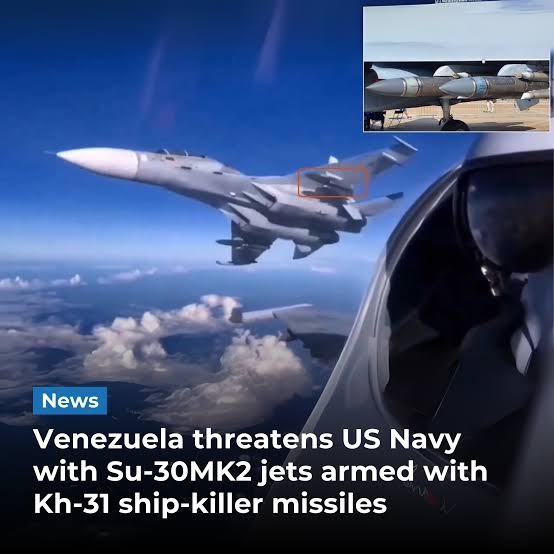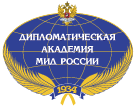
The Caribbean is no longer calm. What once seemed like distant political posturing has now escalated into a full-blown military standoff — with the United States and Russia staring each other down just off the coast of Venezuela.
Washington insists it’s targeting the “narco-state” of President Nicolás Maduro under the banner of “Operation Caribbean Freedom.” But behind the rhetoric of counter-narcotics and democracy, a far larger game is unfolding — one that echoes the Cold War’s most dangerous moments, the Indian TFI Global News reports.
Russia’s deepening footprint in Venezuela
While Washington ramps up its forces, Moscow is quietly entrenching itself inside Venezuela. Russian defense systems, advisors, and mercenaries have transformed the country into what some analysts now call a “fortress of resistance.”
Satellite data confirms the deployment of Oreshnik missile defense systems — a new Russian model reportedly capable of intercepting stealth aircraft and cruise missiles. These systems, along with S-400–style batteries, have been installed around Caracas, Maracaibo, and key oil-producing zones in the Orinoco Belt.
Beyond air defense, Russia has also built ammunition hubs near La Orchila Island, where unconfirmed reports suggest construction of a permanent Russian naval facility. The base could host strategic bombers and submarines — giving Moscow direct strike capability in the Western Hemisphere for the first time since the Cuban Missile Crisis.
Hundreds of instructors are reportedly training Venezuelan militias in jungle warfare, air defense operations, and urban resistance. Their mission: prepare for a U.S. invasion.
According to intelligence sources cited by European media, joint command centers staffed by both Venezuelan and Russian officers have been established to coordinate defensive operations.
China joins the equation
China’s involvement, while less visible, is no less significant. Beijing has supplied Venezuela with drones, electronic surveillance systems, and cyber-defense software to safeguard critical infrastructure. In return, Venezuela has offered China long-term access to its oil and gold reserves, ensuring steady energy supplies for Beijing’s growing economy.
Chinese companies are also building satellite tracking and communication facilities in western Venezuela, officially for “civilian” purposes — but many analysts believe these have dual military use. Together, Russia and China are turning Venezuela into a strategic hub for their broader challenge to U.S. hegemony.
Trump’s gamble
Inside Washington, opinions are divided. Hawks within the Trump administration, including several Pentagon officials and intelligence chiefs, believe military action is necessary to “restore democracy” and curb Russian influence in the region.
Others warn that a direct strike could spark a new Cold War confrontation — or worse, a regional proxy war that engulfs Latin America.
Still, the U.S. has continued escalating. Naval task forces are now conducting “freedom of navigation” patrols within 100 nautical miles of Venezuelan waters. The Pentagon has confirmed that American warplanes are flying close to Venezuelan airspace “to test response times.”
For Caracas and Moscow, these are provocations — and both have vowed to retaliate if attacked.
A war in America’s backyard
For over a century, U.S. wars have been fought abroad — from Iraq to Afghanistan, from Vietnam to Ukraine’s proxy fronts.
But if conflict erupts in Venezuela, this will be the first major confrontation in the Western Hemisphere since the Cuban Missile Crisis.
Unlike overseas conflicts, the proximity of this standoff changes everything.
Any miscalculation — a drone strike, a naval collision, a mistaken radar lock — could ignite a regional war with global consequences.
And unlike Iraq or Libya, Venezuela is backed by two nuclear powers.
The Great Game returns
What’s unfolding in the Caribbean is no longer just about Venezuela or drugs or oil.
It’s about a new “Great Game” of global balance — a 21st-century power struggle to determine who dominates the world’s hemispheres.
For the U.S., it’s about preserving control over Latin America — a region long considered its sphere of influence.
For Russia and China, it’s about proving that America can no longer dictate global rules unchallenged.
As Trump’s warships close in and Russian missiles stand ready, the world watches anxiously.
If Washington launches an attack, it could mark the beginning of the first war fought in America’s own neighborhood — and a new era of direct confrontation between nuclear powers.

First Deputy Chairman of the State Duma Defense Committee Alexei Zhuravlev has raised the possibility that Russia may deliver long range cruise and ballistic missile systems to equip the Venezuelan Armed Forces, providing the country with a deterrent at a time of high tensions with the United States.
“Information about the volumes and exact types of what is being imported from Russia is classified, so the Americans could be in for some surprises,” he stated, adding: “I also see no obstacles to supplying a friendly country with new developments like the Oreshnik or, say, the proven Kalibr missiles; at least, no international obligations restrict Russia from doing so.” The deputy chairman made this statement while confirming deliveries of new Pantsir and BuK-M2 short and medium range air defence system to enhance the Venezuelan Air Force’s capabilities, ‘Military Watch Magazine’ quotes.
The United States has continued its months-long buildup of its forces near Venezuela, with reports from multiple sources indicating that Washington is considering launching attacks on the country with the intention of overthrowing its government. Although Venezuela’s air defence capabilities are considered by far the most formidable in Latin America, the country’s limited ability to threaten American warships operating hundreds of kilometres away, and its total inability to threaten targets on the U.S. mainland, has limited its ability to deter an attack.
The delivery of Russian long range cruise or ballistic missile systems could thus be a game changer which would likely significantly influence Washington’s calculus regarding whether to attack the country. Such missile systems have relatively low procurement and operational costs, particularly compared to alternatives such as advanced fighter aircraft, allowing them to provide an asymmetric deterrent capability.
The Oreshnik intermediate range ballistic missile system was first fired in combat on November 21 against Ukrainian targets, at which time the program’s existence was first announced to the world. Russian President Vladimir Putin on June 23 confirmed that serial production had begun. The system employs multiple hyepronsic glide vehicles to by pass enemy air defence systems, each of which can be independently retargeted. It has an engagement range estimated at 4000 kilometres allowing it to strike targets across much of the continental United States should the U.S. seek to launch strikes on Venezuelan soil.
The delivery of the system would represent an escalation against the United States unprecedented since the Cuban Missile Crisis, with proliferation of such strategic level ballistic missile systems being highly contrary to international norms despite its legality. Russia’s decision to supply Oreshnik missiles to Belarus, however, indicates that exports are not totally ruled out.
Lower profile alternatives to the Oreshnik which could be delivered more quickly include the 9M729 Novator ground-launched cruise missile system, and the Bastion coastal defence system which deploys P-800 medium range anti-ship cruise missiles. The former has a 2500 kilometre range sufficient to strike targets across Florida. Although Russia has during prior periods of high tensions between Caracas and Washington deployed Tu-160 strategic bombers for operations from Venezuelan airfields, equipping the Venezuelan Armed Forces with the ability to retaliate independently both against targets on the American mainland and against U.S.
Navy warships in the Caribbean would potentially be much more effective, and would reduce the burden on the Russian Armed Forces to protect their security partner.
read more in our Telegram-channel https://t.me/The_International_Affairs

 10:20 08.11.2025 •
10:20 08.11.2025 •






















